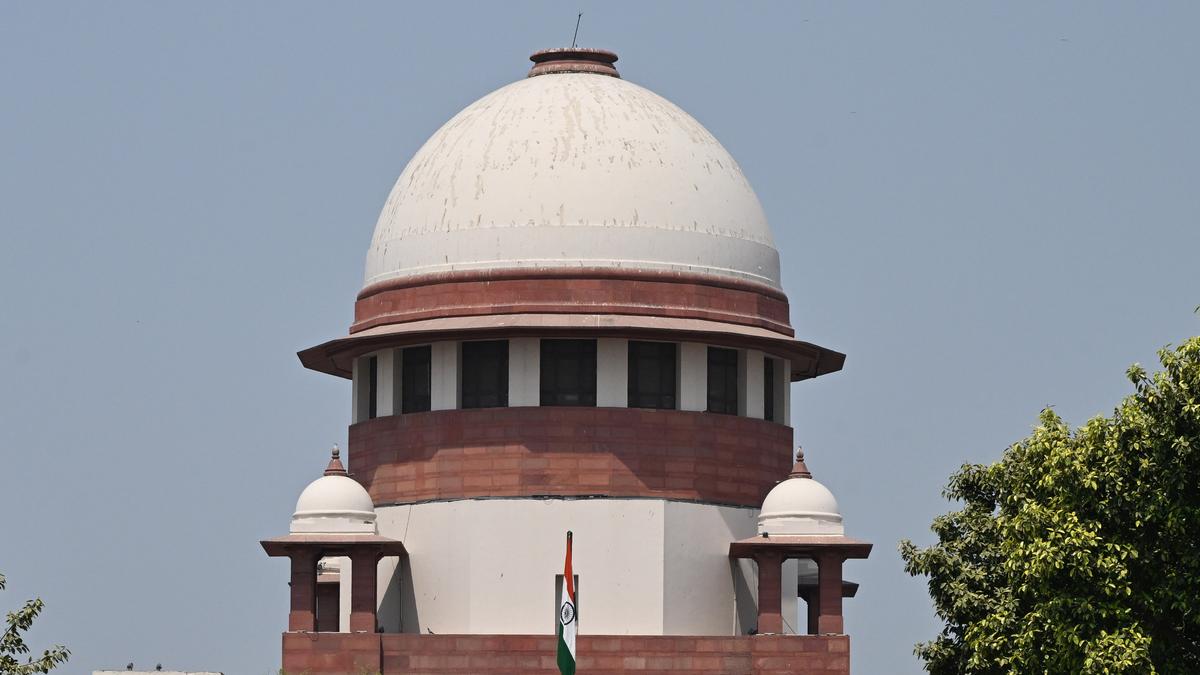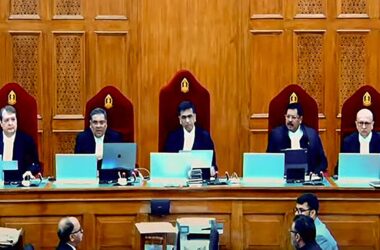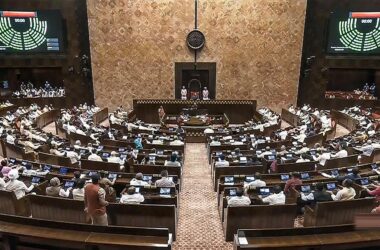By its current judgment in M.Ok. Ranjitsinh and Ors. vs Union of India & Ors., the Supreme Court docket of India has dropped a big rock into the comparatively placid waters of India’s nascent local weather change jurisprudence. It has learn into the Structure of India the suitable to ‘be free from the adversarial results of local weather change’, figuring out each the suitable to life and the suitable to equality as its sources. As a brand new authorities considers its imperatives and agenda, Ranjitsinh supplies an intriguing alternative to assume by and presumably enact rather more systematic governance round local weather change.
A brand new proper round local weather
Students and authorized practitioners are nonetheless unpacking the judgment. The problem earlier than the Court docket was whether or not and the way electrical energy transmission strains will be constructed by the habitat of the critically endangered Nice Indian Bustard. The federal government claimed {that a} earlier court docket order defending the hen’s habitat had affected the nation’s renewable power potential. Modifying this order, the Court docket prioritised transmission infrastructure to allow accelerated growth of renewable power to handle local weather change. However the extra seismic side of the judgment was the newly minted ‘local weather proper’ rooted within the constitutionally assured proper to life (Article 21) and proper to equality (Article 14). Studying this proper into the Structure doubtlessly opens the door to local weather litigation, empowering residents to demand from the federal government that this proper be protected.
EDITORIAL | A distinct right: On climate change and species protection
However the judgment additionally leaves unresolved questions. Does the Court docket overstate the large-scale clear power agenda as the primary pathway to avoiding local weather harms and, correspondingly, understate local weather adaptation and native environmental resilience? Simply how will this proper towards the adversarial results of local weather change be protected? And what may it imply for the agenda of the newly fashioned authorities? A technique ahead is the gradual accretion of judicial choices round this proper. However one other is new laws to actively realise a proper towards the adversarial results of local weather change.
The previous strategy, the proliferation of court-based motion by enhanced litigation round local weather claims, will possible lead, slowly and over time, to an incomplete patchwork of (judiciary-led) protections. As with many different well-meaning judicial orders directing the safety of elementary rights, realising local weather rights may turn out to be contingent on the passage of a number of subsequent coverage actions. Furthermore, a patchwork strategy is much less prone to chart an overarching framework to information future coverage.
Is the latter strategy, local weather laws, then a most popular strategy to guard local weather rights? The judgment itself states that there isn’t a ‘umbrella laws’ in India that pertains to local weather change. And in so doing, appears to implicitly recognise the deserves of an overarching, framework laws. Drawing from the expertise of different nations, framework laws can convey a number of benefits. It may possibly set the imaginative and prescient for partaking with local weather change throughout sectors and areas, create obligatory establishments and endow them with powers, and put in place processes for structured and deliberative governance in anticipation of and response to local weather change.
OPINION | A half-hearted local weather change verdict
Indian context is necessary
These are necessary benefits, and good causes for India to contemplate local weather laws. However on the similar time, it’s important that Indian local weather laws not blindly copy different nations, and is tailor-made to the Indian context.
Undoubtedly, India must transition to a low-carbon power future, an crucial that’s highlighted within the Ranjitsinh judgment. However this, by itself, isn’t almost sufficient to implement a proper towards the adversarial results of local weather change. Local weather laws must also create a supportive regulatory setting for extra sustainable cities, buildings, and transport networks. It ought to allow adaptation measures reminiscent of warmth motion plans delicate to native context. It ought to present mechanisms for shifting to extra climate-resilient crops. It ought to defend key ecosystems reminiscent of mangroves that act as a buffer towards excessive climate occasions. And, it ought to actively think about questions of social fairness in the way it achieves these duties. In short, it ought to present a method of mainstreaming and internalising local weather change concerns into how India develops. Nothing much less is required to make progress towards avoiding the adversarial results of local weather change.
OPINION | Restoring earth’s proper to ‘good well being’
However having a single, omnibus legislation that covers all these areas isn’t possible, notably within the face of an present authorized framework that legislates on most of those points. It’s unattainable to anticipate upfront all of the methods by which society can and will put together for local weather change. So, what’s the method ahead?
Right here, there’s scope to study from worldwide expertise each what to not do and what instructions to comply with. Local weather legal guidelines in lots of nations, typically following the instance of the UK, focus narrowly on regulating carbon emissions, for instance, by setting common 5 yearly nationwide carbon budgets after which setting up mechanisms to satisfy them. This form of strategy, which has sadly turn out to be considerably of a template for nations to comply with, is ill-suited to India.
As an alternative, as a result of India remains to be creating, is extremely weak, and but to construct a lot of its infrastructure, what the nation wants is a legislation that permits progress towards each low-carbon and local weather resilient growth. The excellence between a regulatory legislation, such because the U.Ok.’s, and an enabling one, like, for instance in Kenya, is necessary to know. A regulatory legislation focuses, in a slim method, on emissions and the way they are often restricted. An enabling legislation will be written to stimulate development-focused choices in a spread of sectors throughout the financial system — city, agriculture, water, power and so forth — by systematically asking whether or not every choice strikes the nation nearer to or farther from low-carbon development and local weather resilience. Importantly, this strategy emphasises adaptation as a lot as mitigation.
An enabling legislation is prone to be a extra procedurally-oriented legislation, one which systematically creates the establishments, processes and requirements for mainstreaming local weather change throughout various ministries and completely different components of society. For instance, such a legislation would construct in procedures to assist knowledge-sharing, making certain transparency and avenues for public participation and knowledgeable session, prompting significant setting (and revision) of targets and timelines and reporting towards these.
The issue of federalism
There may be one other dimension important for a local weather legislation tailor-made to India: making certain that the legislation works successfully inside Indian federalism. Many areas related to local weather motion, from city coverage to agriculture and water fall underneath the authority of sub-national governments — States or native ranges, and electrical energy is also a concurrent topic. An Indian local weather legislation should concurrently set a framework for coherent nationwide motion whereas decentralising sufficiently to empower States and native governments, and allow them with data and finance to take efficient motion.
Lastly, the enabling function ought to ideally additionally prolong past authorities. Enterprise, civil society and communities, notably these on the frontlines of local weather impacts, have important data to convey to power transition and resilience. Discovering methods of enabling participation in choice making would allow all these sections of society to convey their data to the desk in addressing local weather change. An efficient Indian local weather legislation based mostly on enabling procedures would additionally present alternatives for voice to various segments of society.
These broad concepts present a set of ideas for a local weather legislation tailor-made to India, one that gives a foundation for taking ahead and fulfilling the promise of the Ranjitsinh judgment.
Navroz Ok. Dubash is Senior Fellow on the Sustainable Futures Collaborative. Shibani Ghosh is Visiting Fellow on the Sustainable Futures Collaborative. Aditya Valiathan Pillai is Fellow on the Sustainable Futures Collaborative








